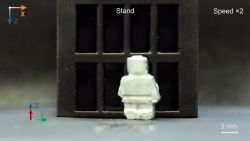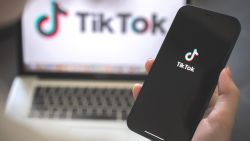President Donald Trump signed an executive order on Wednesday barring US firms from using telecom gear from sources the administration deems national security threats.
The decision risks escalating tensions with China as the two nations clash over trade andwhether Huawei — the world’s largest provider of telecommunications equipment — poses a spying risk to Western infrastructure networks.
White House officials declined to identify China and Huawei as the intended target of the executive order.
However, shortly after the order was issued, the US Commerce Department formally added Huawei to the list of companies the US government considers to be undermining American interests. By adding Huawei to the so-called Entity List, the Trump administration ensures Huawei will be covered by the new executive order.
Inclusion on the list also means companies such as Qualcomm (QCOM) mayhave to apply for US export licenses to continue supplying technology to Huawei.
The executive order — along with Huawei’s addition to the list — comes as Trump is seeking to apply additional pressure on China in trade talks, with stiffer tariffs affecting billions of dollars of goods.
Senior administration officials told reporters that the document reflects Trump’s commitment to keeping the nation’s networks secure from foreign adversaries. And other US officials have openly lobbied allies not to use Huawei gear, arguing that the company’s products could offer the Chinese government a way to spy on sensitive US communications.
The Trump administration will develop more specific rules over the next 150 days, according to one senior official, and US businesses will be invited to offer feedback.
China on Thursday urged the United States to stop “these wrongful actions.”
“China has always stressed that the concept of national security should not be abused. It should not be used as a tool to push forward trade protectionism,” Ministry of Commerce spokesman Gao Feng told reporters in Beijing.
Huawei said banning it from the United States would ultimately hurt American businesses and consumers, and hamper US efforts to develop 5G technology.
“Restricting Huawei from doing business in the US will not make the US more secure or stronger; instead, this will only serve to limit the US to inferior yet more expensive alternatives, leaving the US lagging behind in 5G deployment,” the company said in a statement.
Small US carriers could suffer
The proposal could prove costly to small and rural wireless carriers, many of whom use equipment from Huawei due to its lower cost compared to the next largest competitors, Europe’s Nokia (NOK) and Ericsson (ERIC). Most large carriers don’t use Huawei equipment.
While the executive order would apply to past purchases of telecom equipment, officials declined to say whether the government would help carriers pay to remove the gear from their networks — or what the punishment could be for companies that violate the new policy.
The order left American telecom companies that rely on foreign-made equipment wondering how it would be implemented.
“We’ll just have to see what it is and we’ll have a definite reaction one way or another,” said Craig Gates, the CEO of Triangle, a small network that uses Huawei gear.
He said that members of various trade associations have already been discussing whether there would be federal help to offset the costs of taking out offending equipment.
“Because when all this equipment went in there was no talk of these issues,” he said. “Would there be help to replace it?”
CNN’s Alex Marquardt, Steven Jiang and Eric Cheung contributed to this report.

























